It is quite laughable when I remember some things we were made to believe in time past and even now, some people still think those things are true. This post might be long or short, it all depends on how many of these myths we are able to cover and debunk with facts and not just fallacies. As usual, you have something to learn here. Let's begin right away, shall we?
I will start with the common one a lot of people think is true but is actually false to a reasonable extent. Science is fact based on substantial proof and facts with empirical evidences. Anything outside this remains a myth.
1. Microwave use causes cancer
At the early stage of my life, I was actually made to believe that using microwaves to warm food and other foodstuff causes cancer. Before we try to debunk this myth, I think it is proper we understand how microwave works. A microwave is simply called that because it uses microwave radiation to cook or warm food. You possibly would also ask, so what then is microwave radiation?
Microwave radiation refers to electromagnetic radiation that has a frequency that is within the microwave range (0.3GHz and 300GHz). The major difference between them and other types of waves is that they have longer wavelengths and lower frequencies compared to infrared radiation, visible light, and ultraviolet radiation, and most importantly, they are non-ionizing in nature.
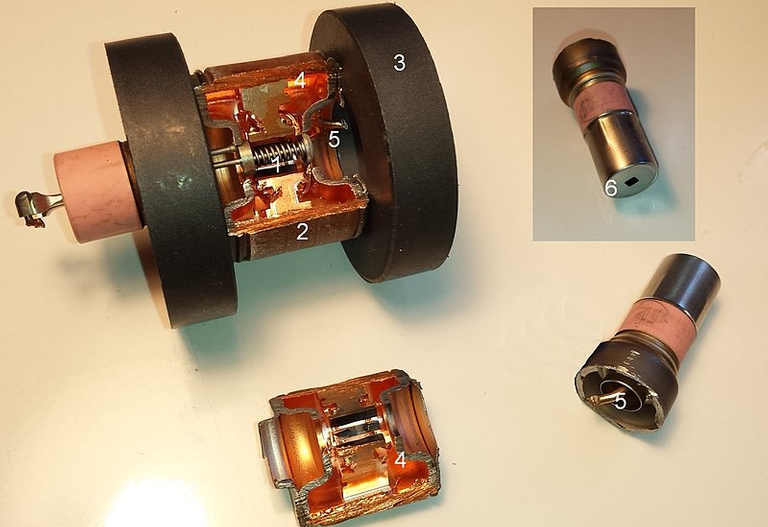
The Magnetron components. 1-Central heated cathode, 2-Copper anode, 3-Permanent magnet, 4-Cavity resonators for microwaves, 5-Coaxial line to couple out the microwave, 6-Outlet pin Notes: cathode may contain radioactive thorium, Insulating ceramic may contain BeO, complete outlet pin emits radiation
The word non-ionizing means that they do not have enough energy to ionize molecules in a substance. Ionization is a property peculiar to dangerous radiations like X-rays, Gamma radiations, UV radiation (Cosmic rays), etc. Since microwaves are unable to ionize, it is therefore wrong to say that they cause cancer. What generates the radiation in the microwave is a device called magnetron and it is mainly directed at the food or substance within the microwave chamber.
The simple principle behind the operation of this device is that it generates microwave radiation directed into the cooking chamber where it penetrates the food and causes either the water or other molecules of the food substance to vibrate rapidly. It is actually this vibration and rapid movement of the molecules in turn generates heat that ultimately warms the food.
Probably you have been wondering why using microwaves cooks food faster, well just as we explained above, Microwaves are able to penetrate the food because they are absorbed by the water and other molecules. This is quite different from conventional cooking methods, such as baking or roasting, which rely on the transfer of heat through conduction, convection, or radiation.
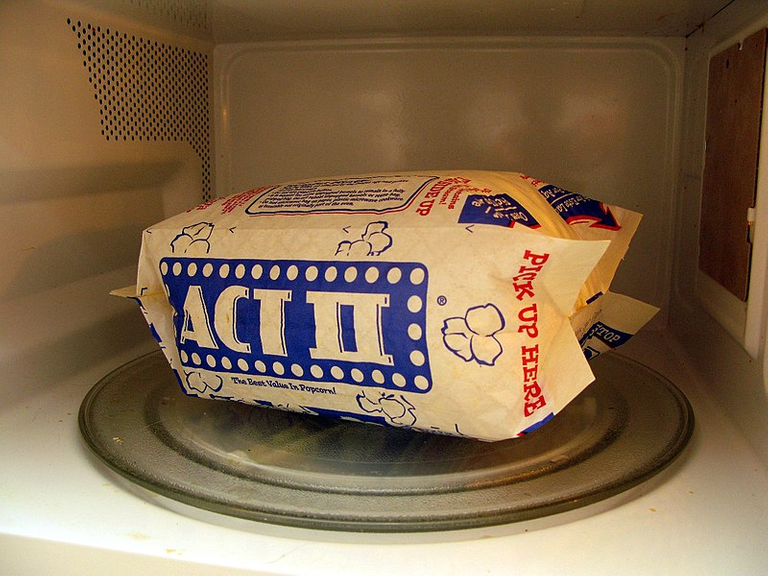
Microwave popcorn
Since the microwave energy used in cooking is absorbed by the food and heats it evenly, this results in the food being cooked or warmed quickly and evenly and this is also facilitated by the rotating motor within the cooking chamber. Saying that microwave causes cancer is more or less saying that Bluetooth, WIFI, and some of these low-frequency waves can cause cancer.
This however does not still rule out safety measures while operating microwaves. For safety concerns, the microwave will never work while the lid is left ajar. So any moment your microwave ever works while the lid is left open, please, do not operate it. As much as it may not cause cancer, direct and long exposure may have undesirable effects.
Research has shown that over exposure of food to microwave radiation can contribute to the formation of a neurotoxic and carcinogenic substance called Acrylamide. Too much of everything is obviously bad, just as over cooking food can cause burns at the bottom of the pot, so also can over microwaving. Moderation remains the ultimate.
Verdict: No research has shown that normal microwave use directly causes cancer, hence It is a myth, thus debunked!
2. We use 10 percent of our brain
I actually have never for once believed this. So if we use 10 percent of our brain, what happens to the rest part of it? Well, long story cut short, as humans, the use of different parts of the brain depends on the situation and circumstances. Different parts of the brain, have various functions. A larger part of it can even be required for simple tasks. Some even believe that people can either be left-brained or right-brained. It is quite laughable.
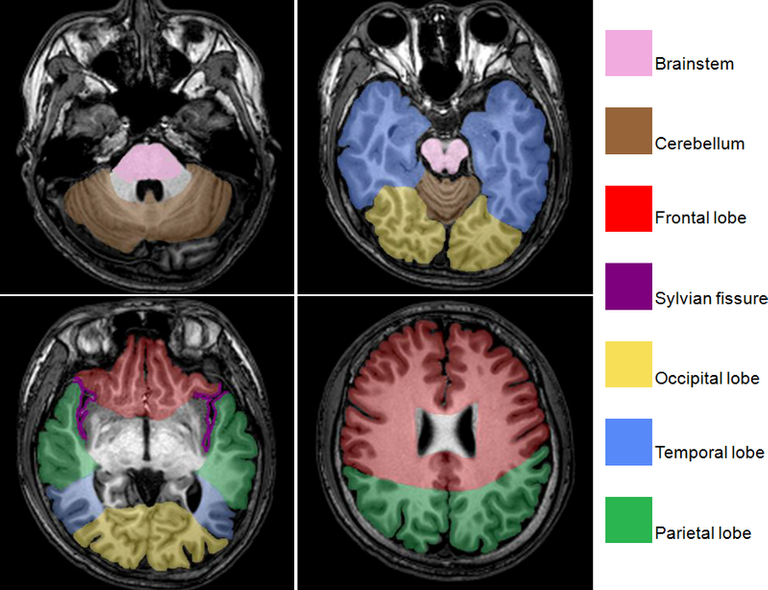
A T1 MRI performed on a healthy subject using spin-echo T1-weighted imaging
Technology has helped a lot in disputing these false claims. Research using Positron Emission Tomography (PET) scans and Magnetic Resonance Imaging (MRI), has shown that we even use almost all parts of the brain even during sleep and during some activities. It is important to know that;
All parts of the brain contribute to our mental life and behavior, so we are always using more than 10% of our brain. The entire brain is constantly active, even in periods of sleep: regulating, monitoring, sensing, interpreting, reasoning, planning, and acting
So the notion or idea that we use only a fraction of our brain as humans is a big fallacious one. It has no scientific backing nor has there been any proof to back it up. In reality, different parts of our brain have been proven to be active at different times, and even the less active parts of the brain have important functions.
Verdict: We use all parts of our brains, it all depends on when and for what. 10 percent brain use is hence debunked!
3. Shaving the hair and application of alcohol makes it grow back thicker and faster
Smiles...how is this even through? Yes, it is possible to believe that their certain chemicals that can induce hair growth, but the idea that when you shave your hair, it grows back thicker, stronger, and faster is totally fallacious. Cutting hair has no relationship with how fast the hair grows. This is actually a case of psychological deception.
Application of alcohol to hair even causes more damage to the hair as opposed to what people think about it. Alcohol tends to make the hair brittle because they dehydrate it and even the skin around the hair on application. A scaly and hard hair sure will loose its flexibility and rigidity this, upon combing, they simply fall off.
Shaving likewise does not affect the thickness or rate of hair growth. What gives people the idea that the hair is thicker is this; Usually, after shaving or cutting the hair, they usually appear to be thick, the reason being that hair that has been cut does have blunt tips whereas the ones that have not been cut would always have tapered tip and ends. So when you rub your hand across the area of the hair that has been shaved, feels rough and with some friction when compared to when it was not shaved. Hormones regulate hair follicle growth and not shaving.
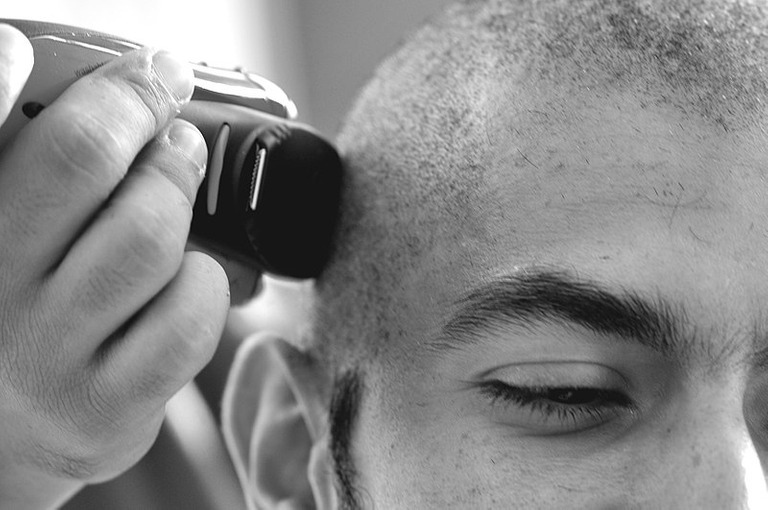
Haircut
Over time, the hair grows back and extends, thus forming a tapered end again. Overgrown hair is always susceptible to cuts while short ones are hardly pulled off the skin or scalp. This is why you would always see hair drop as you try combing or brushing very long bushy hair. This is just a simple explanation of debunking the myth.
Verdict: Shaving or cutting of hair combined with the application of alcohol to it does not make the hair grow back stronger and thicker! Hence, debunked!
4. Foods rich in carbohydrates yields highest energy than any other
You might want to easily believe this, but the truth of the matter is that, carbohydrates are no match for lipids and fats when we talk about energy generation. I think the best way to put it is this, carbohydrates are quicker energy source than fats. The catabolism (breakdown) carbohydrates, the likes of glucose, yields energy faster than fats however, they do not produce the amount of energy a molecule of fat would when it is catabolized.
While carbohydrate breakdown yield energy in no time, fats yields theirs slowly and mostly over a long period of time. In essence, carbohydrates are energy source of the moment while fats are energy source for endurance and for long duration. The catabolism of fats will only occur when glucose is no longer available.
In the real sense, this cannot really be called a myth but a mere misconception. Reason being that, both carbohydrate and fats are true energy sources but what determines the use of each one is the state of the body. Just like we established earlier, carbohydrates will yield energy readily, fats do not unless available glucose is depleted. Fats are energy we use during period of prolonged fasting.
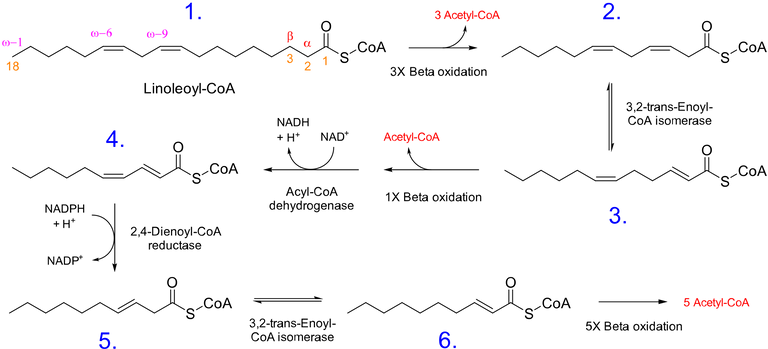
Beta-oxidation of linoleic acid bound to coenzyme A (linoleyl-CoA) as an example of beta-oxidation of an unsaturated fatty acid. 9 acetyl-CoA molecules are formed
The breakdown Triacylglycerides, TAG (storage form of fats in the body) into fatty acids and their subsequent Beta oxidation in the mitochondria of the liver cells yields acetyl-coA. This acetyl-coA then goes through the citric acid cycle where it produces only one ATP per cycle.
Now, some high energy molecules (NADH, FADH2) are also produced in this particular citric acid cycle aka Krebs cycle but cannot be used by the body in this form, hence the need for them to be transported into the liver mitochondria.
These high energy molecules will have to pass through the electron transport chain, a process that occurs specifically in the cristae of the mitochondria. It is this process that generates the additional ATP required by the cells for optimal functions. It is this reaction that generates the heat in humans abd animals generally. This is why the liver attributed at the organ of heat generation but the actual place in the liver is the mitochondria (the power house).
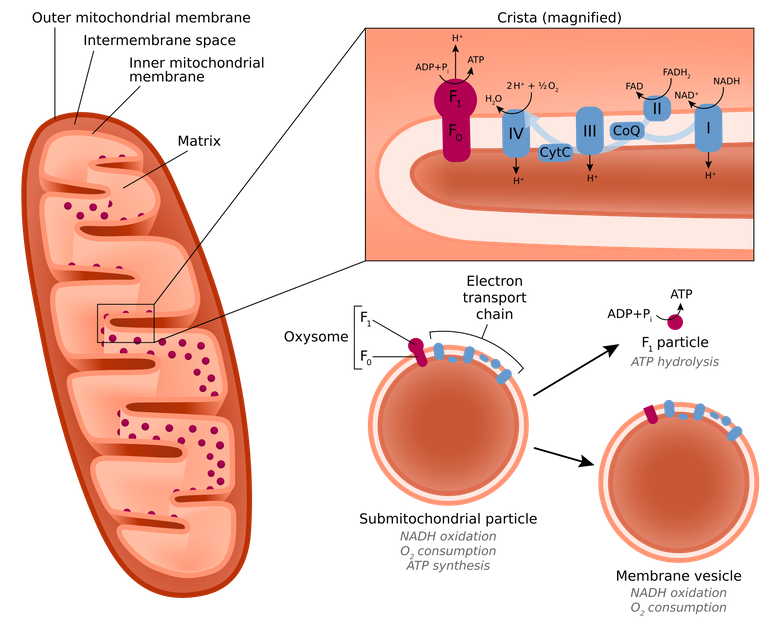
Diagram of submitochondrial particles (inside-out inner mitochondrial membrane vesicles) and cross section of a mitochondrion, showing the normal orientation of oxysomes and the electron transport chain
The breakdown of a single molecule of fat alone yields a total of 129 ATP (the energy currency of the cells) if we add the ones produced during the Krebs cycle and that produced during electron transport chain. On the other hand, a single molecule of carbohydrate like glucose will only yield a total of just 36 ATP. So who is the boss now? I guess you already know.
Verdict: The energy generated depends on the state of the body. Carbohydrates are momentary source of energy while fats are energy source for endurance and they yield the highest amount of energy than carbohydrates. Let's look at the last one and we call it a day.
5. Drinking cold water can make you sick
This particular case is relative and mainly depends on your state of health but in general drinking moderately cold water does not in any way cause any disease. Personally I take cold water a lot, especially during my time in Nigeria after exposure to hot sunny days.
However, it is true that drinking very cold water can cause your body to go into "shock" and slow down your digestion, as your body has to expend energy to warm the water to your body temperature. The normal body temperature is 37 degrees Celsius and this is the optimal temperature most enzymes require to function and carry out degradation of food substances.
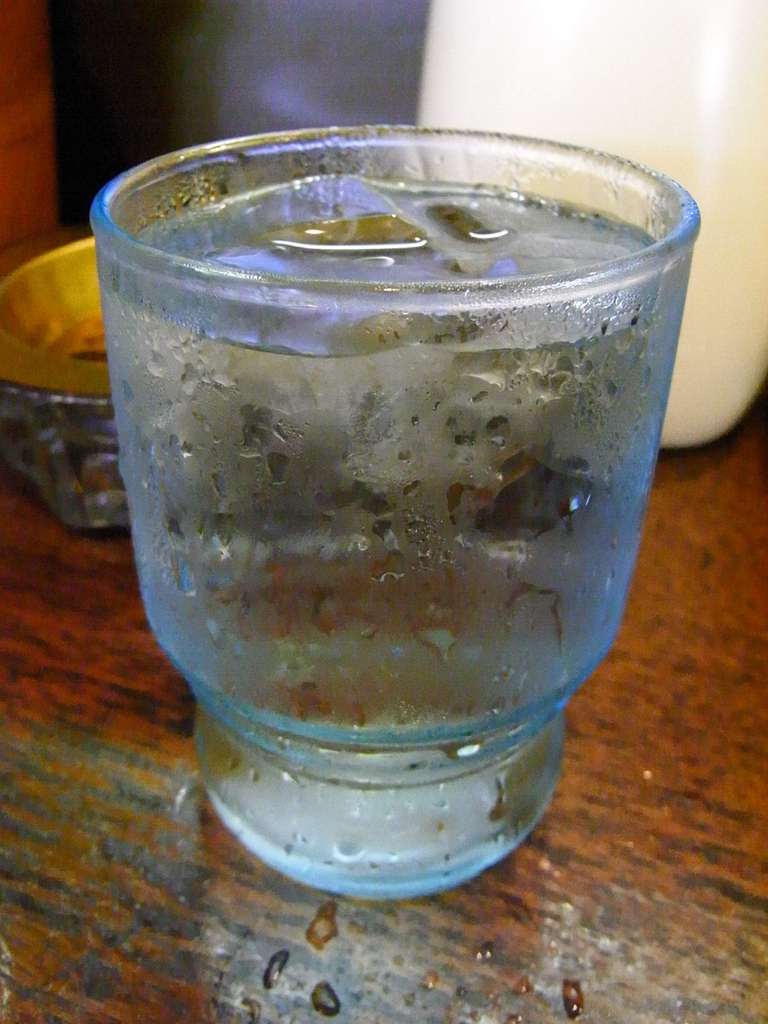
Cold water
Taking excessively cold water immediately after meal will reduce the activity of these enzymes because on taking that cold water, your body temperature drops as well. The more direct effect is on the food particles itself. So it is better to take water slightly near room temperature in order to improve the digestion process.
That being said, cold water consumption mainly depends on your body state and its consumption can very refreshing if you do not have any pre existing illness. For people with pneumonia (a bacteria that thrives in cold environment), taking cold water is generally not advisable so as to prevent reducing the body's temperature and encouraging their multiplication.
But saying that cold water is the etiology of a disease condition is a blatant fallacy with scientific backing. You only get sick if you are already infected with a pathogen that is encouraged by the cold water. For example, during winter, people are more likely to fall sick from cold weather because viruses that thrive in the low humidity are often in abundance during this period.
Everything is all about moderation. When you are hot, cold water will help and when you are cold, a cup of hot drink will suffice. The goal is to restore balance when need be.
Verdict: Cold water can be very refreshing and help relaxes your body. There is no scientific backing to the claim that cold water makes you sick. There must be pre-existing primary causative factor but not cold water.
Just as an addendum, it is assumed that cracking your knuckles causes osteoarthritis (joint inflammation).
The "pop" of a cracked knuckle is caused by bubbles bursting in the synovial fluid — the fluid that helps lubricate joints. The bubbles (gas) pop when you pull the bones apart, either by stretching the fingers or bending them backward, creating negative pressure.
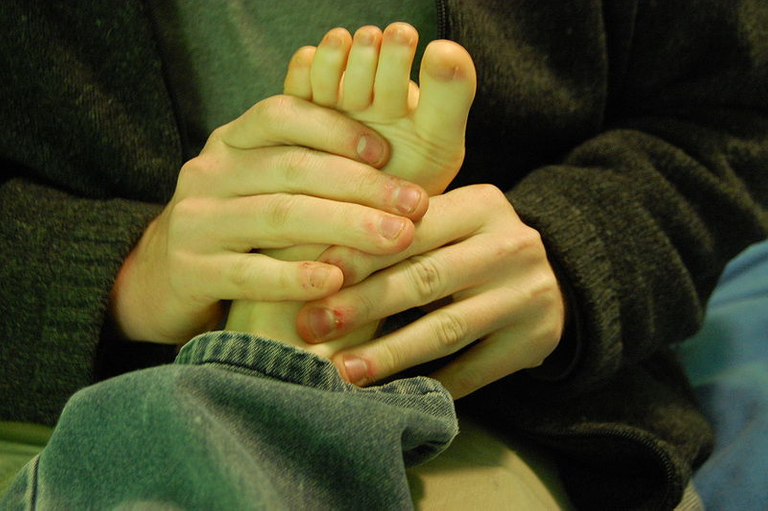
Foot knuckle cracking
The above is reason why when you crack your knuckle, you won't be able to do it again for while until the released gases have dissolved back into the synovial fluid. There is no evidence to show that cracking your knuckles causes osteoarthritis however, it may cause reduced grip strength as has been confirmed in some research studies. So it's much better to just reduce it as much as you can as it can be habitual.
I will conclude by saying this, the world is dynamic, things that we believed before to be impossible are now becoming possible. What we do or expose ourselves to matters and it is much better be done in moderation and utmost care. Effects may not manifest now, but what can we say in the nearest future?
Alright, that's all for today, take care.
References
•Does radiation from microwaves cause cancer?
•Long-term exposure to microwave radiation provokes cancer growth: evidences from radars and mobile communication systems
•What Does the General Public Know (or Not) About Neuroscience? Effects of Age, Region and Profession in Brazil
•Shaving and hair growth
•Knuckle Cracking and Hand Osteoarthritis
•Comparison of the effects of cold water and ice ingestion on endurance cycling capacity in the heat
•What makes the sound when we crack our knuckles?
•Effect of Microwave Heating on the Acrylamide Formation in Foods
•Should Workers Avoid Consumption of Chilled Fluids in a Hot and Humid Climate?
•“Knuckle Cracking”: Can Blinded Observers Detect Changes with Physical Examination and Sonography?
•Myth or Reality—Transdermal Magnesium?
I like this new format of yours. Probably more approachable for most people than your usual deep-dives. For those who like to skim-read, the 'verdict' sections are useful too.
Yeah I guess, not many are fan of long reads.
!discovery 30
A lot of people have been forced to believe that number 2 though
That's true, it's time people get to know the right thing.
💕
Thanks for your contribution to the STEMsocial community. Feel free to join us on discord to get to know the rest of us!
Please consider delegating to the @stemsocial account (85% of the curation rewards are returned).
Thanks for including @stemsocial as a beneficiary, which gives you stronger support.
💓
This post was shared and voted inside the discord by the curators team of discovery-it
Join our community! hive-193212
Discovery-it is also a Witness, vote for us here
Delegate to us for passive income. Check our 80% fee-back Program